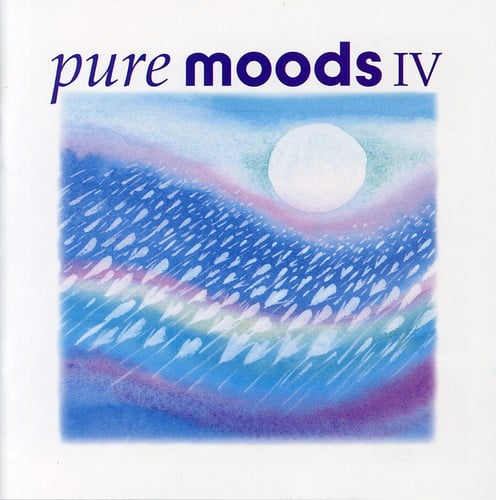

Rolling Stone later called it “a debut performance of a kind we have no right to expect from anyone.” Tubular Bells would launch the Virgin empire by earning the label million-dollar financing from its investors, become the third-best-selling album of the ’70s in the UK, provide theme music for William Friedkin’s 1973 blockbuster, The Exorcist, and sell more than 15 million copies globally. “One of the most impressive LPs I’ve ever had the chance to play on the radio,” he purred on his May 1973 transmission.
PURE MOODS INFOMERCIAL FULL
Miraculously, Peel adored the record and premiered it in full on his show. What he did understand, however, was that there was a vested, collective, and profitable desire for music that made audiences feel like connoisseurs of a higher order.Ĭannily, Branson invited Britain’s leading tastemaker and radio host, John Peel, onto his houseboat for lunch, during which he played the entirety of Oldfield’s finished two-track, 49-minute Tubular Bells to the captive presenter. It was clear that the future mogul yearned to head the most influential label in an industry that he knew incredibly little about. After hearing the mesmeric and thoroughly uncommercial music Oldfield had designed in the wake of a disturbing LSD trip, Branson backed his production efforts in full at the Virgin manor. That an album with a title and sound true to the phrase “Tubular Bells” could have eventually sent the world into a mania for two 20-some-minute, mostly repetitive instrumental opuses of glockenspiel and honest gibberish is testament to the strength of Virgin’s aspirational animus. A river of German esoterica gave the label several releases by the psychotropic faerie proggers Faust (who were deftly marketed as “the German Beatles!”) and the rhinestoned scuzz of Tangerine Dream, but the pièce de résistance of Virgin’s inertia lay in a freaky slab of music by a shy 19-year-old composer named Mike Oldfield. They held court, especially in the early ’70s, to a certain genre fit for the bookish, acid-dabbling Eurodude who read NME and dreamt of armfuls of warm Eurogirls who did the same. It would become one of the largest and most powerful record agencies in the world.Īfter the first ripe boils of the young label’s hardships had been lanced (Branson was noted for having “no musical taste whatsoever” until enlisting his avant-minded second cousin to arrange a roster of artists for him), Virgin enjoyed a mainstay on the tone and volume of music sales for many years. High off the fumes of his boon, he assembled a team from his editorial staff, bought a manor, refurbished it into a recording studio, and christened the effort “Virgin” in honor of his fumbling inexperience in the music industry. Branson’s arbitrage paid off well in an unwittingly fertile market, functionally reconfiguring a luxury product into a more petty-bourgeois pleasure. “Name any record you want,” his ad read, “and we’ll sell it to you 10% to 25% cheaper than anyone else.” A business was born.

Seizing the sword of opportunity, he quickly took to the back pages of his paper to be the first to offer a good bargain. Twenty and lordly, then-helming his small but pop-savvy lifestyle magazine, Student, he noticed the UK’s Retail Price Maintenance Agreement-which kept strict restrictions on the saleable cost of vinyl records-had been quietly lifted. In 1970, 22 years before he would publicly weep while selling his record label/airline/mobile-phone/space-tourism conglomerate, Virgin, for over a billion dollars, the rugged and floppy-haired Branson invented the mail-order model of record distribution out of the usual entrepreneurial cocktail of luck and generational wealth. For me, and for many others, it felt like paradise.īefore the shadow of Bezos, before the Zuck, before, even, the contemporary comedy provided for us by the insidiously dippy Elon Musk, there was Sir Richard Branson. Pure Moods’ essence is safe, formless, and mostly meaningless, like a piece of art hung in a bathroom. For others, it can suggest an intensely ambivalent mixture of pity and allure. For some, hearing the album might pang a Proustian memory of falling asleep on a familiar sofa. Swooning and naked in its pride, the 17-song compilation album, advertised in 60-second hallucinations disguised as infomercials, was a warm vat of music that we might today refer to loosely as “new age.” Its carefully selected tracklist-a mosaic made largely up of film or television scores, or trance remixes thereof-seemed engineered to induce a ridiculous sort of fugue state. You may not remember hearing this work, but after watching the commercial, you might find yourself feeling that you’ve always known lines from its script. Unexpected, unbidden, and more or less unnecessary, Pure Moods is a piece woven with some wear into the silk of the popular unconsciousness.


 0 kommentar(er)
0 kommentar(er)
